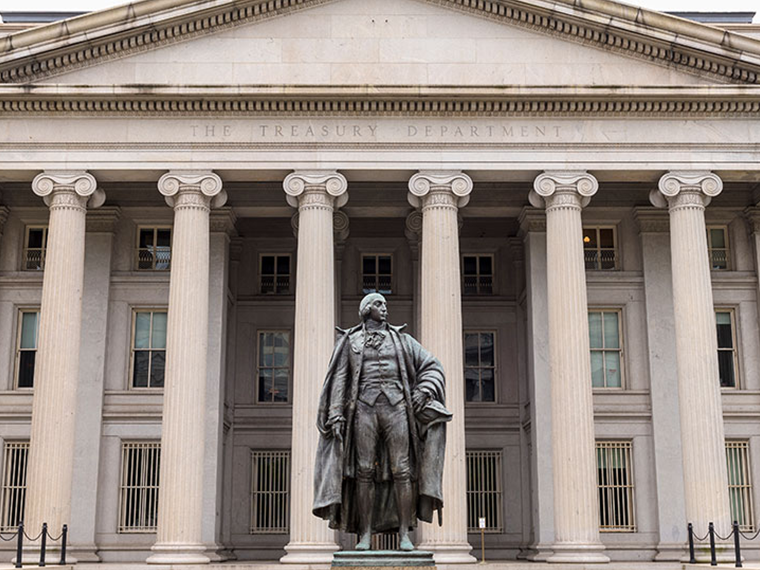Some investment vehicles are more reliant than others on the health of trading firms
Intermediaries are essential to the efficient operation of financial markets, matching buyers and sellers and at times stepping in themselves to take positions in stocks, bonds and other instruments to keep markets liquid (and to seek profit). When an important intermediary runs into trouble — the September 2008 collapse of major Wall Street trading house Lehman Brothers, a recent and dramatic example — it can send asset prices down steeply.
Is that market reaction a response to the perception that the assets — mortgage-backed securities, say — are suddenly worth less, or does it stem from the sense that an intermediary important to orderly trading of those securities is, or could soon be, dead in the water? How much of the market reaction comes from economywide financial distress, and how much is due to worries about the financial health of a critical intermediary? Understanding the importance of intermediaries to the trading of various asset classes can help in gauging the market behavior of those assets, a paper forthcoming in The Journal of Finance by UCLA Anderson’s Valentin Haddad and Tyler Muir shows.
Examining Asset Classes to Identify Impact of Intermediaries’ Financial Health
The paper analyzes asset classes by their degree of financial intermediation in order to quantify how much of the variation in those assets’ prices and risk premiums (the potential additional return demanded by an investor to offset risk) can be attributed to intermediaries, rather than to households.
For example, stocks are the least intermediated: Anyone with a Charles Schwab account can buy and sell shares with ease. By contrast, mortgage-backed securities are more difficult for a retail investor to access although they are widely held and traded by financial institutions. Therefore, Haddad and Muir hypothesize, the prices and risk premium of more intermediated assets will be more affected by the health of financial intermediaries. By contrast, household-level risk aversion will affect, to a greater extent, the behavior of asset classes in which households participate more directly.
The authors analyze eight asset classes, ranked in order of least to most intermediated:
- Stocks
- U.S. Treasury bonds
- Options
- Bonds issued by foreign national governments
- Commodities
- Foreign exchange
- Mortgage-backed securities
- Credit, measured using credit default swap contracts
The researchers arrived at this ranking by measuring the relative holdings of households and institutions for each asset class. They then looked at risk exposure from value-at-risk measures (typically defined as “the dollar amount which losses would not be expected to exceed 99% of the time”) from the 10-K filings that financial intermediaries file with the Securities and Exchange Commission. And they use the expense ratios (fees charged by fund managers) of exchange-traded funds that track different asset classes to gauge how much it costs households to own, or be directly exposed to, different asset classes.
The authors seek to measure the degree of predictability across asset classes to changes in the risk-bearing capacity of intermediaries. Risk-bearing capacity (or its inverse, risk aversion) is a measure of those intermediaries’ financial health: A bank or hedge fund whose books are in terrific shape will have a greater ability to shoulder risk than one that is running low on cash and has piles of debt on its books.
Financial Intermediaries and Their Impact on Asset Price and Predictability
The authors find that, indeed, the health of financial intermediaries matters for asset pricing. When intermediaries become risk averse, they demand higher potential return in affected asset classes, which is another way of saying that the risk premium rises. This phenomenon becomes more predictable as the degree of intermediation increases across asset classes. So there is less predictive power for stocks, the trading of which is less dependent on intermediaries, and more for mortgage-backed securities or credit.
Of course, the financial health and risk aversion of financial intermediaries could to some extent reflect what is going on in the broader economy and, therefore, have some measure of household risk aversion baked in. The authors then look at how an increase in household risk aversion affects different asset classes and find an opposite pattern to what happens with financial intermediaries: Greater levels of household-level risk aversion are associated with “a distinctly decreasing pattern of predictability” as one moves from the least to the most intermediated asset classes.
The authors estimate how much of the variation in risk premiums in each asset class can be attributed to intermediaries and how much to households (their estimates also account for an unexplained remainder that cannot be traced specifically to either source). Beginning with stocks, households account for at least 40% of the variation in risk premiums. That figure declines as the asset classes become more intermediated. At the most intermediated end, credit, households do not account for any variation, and at least 60% of the variation is due to intermediaries.
Finally, the authors compare the returns of hedge funds that use specialized strategies across different asset classes. The more complex the strategy, they hypothesize, the more responsive the hedge fund returns should be to the health of intermediaries. Once again, they find that “predictability is higher for all hedge fund strategies compared to stocks,” since these are specialized strategies that are not easily accessible to the average household. Furthermore, strategies that operate within more intermediated markets, such as fixed-income arbitrage and convertible bond arbitrage, are even more responsive to intermediary health.
“Intermediaries matter for a number of key asset classes including CDS, FX [foreign exchange], MBS, and commodities,” they conclude. “Quantitatively, a sizable amount of variation in risk premium in these asset classes is attributable to intermediaries.”
Featured Faculty
-
Valentin Haddad
Associate Professor of Finance
-
Tyler Muir
Associate Professor of Finance
About the Research
Haddad, V., Muir, T. (2021). Do Intermediaries Matter for Aggregate Asset Prices? The Journal of Finance.






